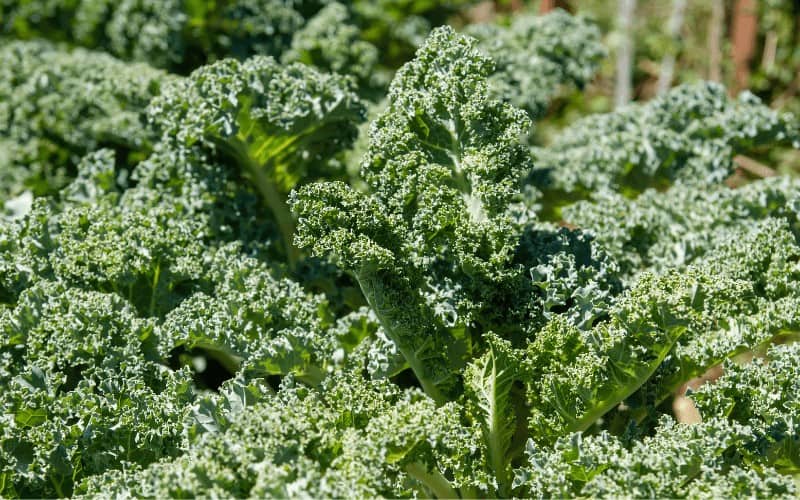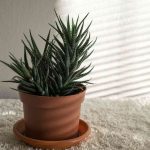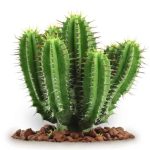A lot of those vegetables you buy from supermarkets are actually man-made, but you never knew. Many years, or rather centuries ago, farmers do practice selective breeding to produce new species of a particular plant and achieve different purposes.
Now, the question here is this, is "kale" among those plants that were gotten through that style of planting, or is it genetically gotten from a lab? In fact, is kale man made or is its current form the way it has been, naturally? To put succinctly, Yes, kale is a man-made plant, and you will find out more about this shortly.
This question now takes us to a parent plant called Wild Cabbage, which has quite many cultivars and has been modified in many ways to produce different species and varieties. On a quick note, kale is usually grown as an annual plant.
Table of Contents
Wild Cabbage (Brassica Oleracea)
Wild Cabbage is the uncultivated form of Brassica oleracea, a plant species in the genus Brassica. Brassica oleracea has the following cultivars: broccoli, cabbage, cauliflower, Brussels sprouts, kale, Savoy cabbage, collard greens, kohlrabi, and gai lan.
From the little highlight above, it is clear that Kale is a cultivar of Brassica oleracea, and if you're proficient with plants, you can already guess that kale is a man-made vegetable.
If you love taking all-natural vegetables, you may need to reconsider kale as among your favorite veggies.
But before you do that, here are some interesting facts you need to know about kale; its origin and how it got to take its current form.
Also, it may interest you to know that banana, orange, and a bunch of other common veggies/foods you consume today are actually man-made - but that's a topic for another day.
Is Kale Man Made?

The simple answer is YES, there's no need to be bitting around the bush for that. However, because kale is man-made doesn't basically mean that it is not safe to consume.
You can still always add it to your diet any time, any day, it has quite a lot of health benefits to deliver to your body.
Actually, kale is a distant relative of wild cabbage; thus, it is also referred to as leaf cabbage. The greenish or purplish leaves produced by this plant are edible, and kale is also cultivated as ornamentals - they look beautiful in gardens.
Of all the varieties - the domestic forms - of Brassica oleracea, kales is the closest to wild cabbage, with so many similarities.
Where Did Kale Originate From?
Sources say that kale originated in the eastern Mediterranean and Asia Minor as far back as 2000 BCE. Then, it was basically cultivated for food.
However, earlier before then, in the 4th century BC, some curly-leaved and flattened-leaves varieties of cabbage have been existing.
These varieties were called Sabellian kale by the Romans, and they are considered the ancestors of modern kales. In the twentieth century, kale was basically a plant used for decorations in many places in the United States.
It only became a popular edible vegetable in the 1990s, when some people got to know about its nutritional value.
For kale to be in its current form - the way we see it today - it passed through decades of selective breeding and mutation. The modern-day kale was achieved by breeding a mutated variety of wild cabbage.
Some Facts About Kale
- Before kale became a popular edible vegetable, its leaves mostly served as decorative garnishes in restaurants.
- Some varieties of kale produce white, blue, lavender, purple, or pink leaves, and they are used in floral bouquets.
- You can differentiate between kale varieties with their stem structure (low, intermediate, or high stems), or leaves structure/colors.
- Kale is not the only man-made vegetable from the Brassica oleracea species.
- It is safe to eat kale or add it to your diet.
How Was Kale Created?
It was bred over many decades to achieve its current form. The process is referred to as selective breeding; a process where farmers breed plants of similar characteristics (but different traits) to obtain a unique species or a new plant.
The human intervention that gave kale its current form happened many centuries ago.
Related Posts:
- How To Harvest Kale
- Is Broccoli a Man-Made Plant?
- Is Cauliflower a Man-Made Plant?
- Is Mushroom A Vegetable?
- Is Onion a Fruit Or Vegetable?
Conclusion
Okay, in summary, is kale man made? The obvious answer is yes. However, it is still a good vegetable to eat as food or add to a diet.
Other man-made vegetables you may love to know about include cauliflower, broccoli, and virtually all the cultivars of Brassica oleracea.
Hopefully, this article has treated and discussed quite a lot of facts about kale and its relative vegetables. You may need to research further if you need to know more about kale.




